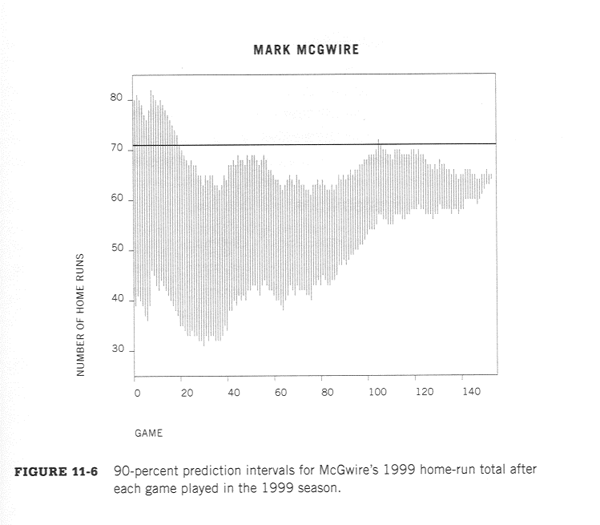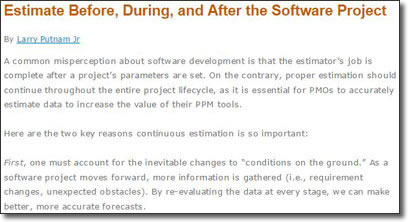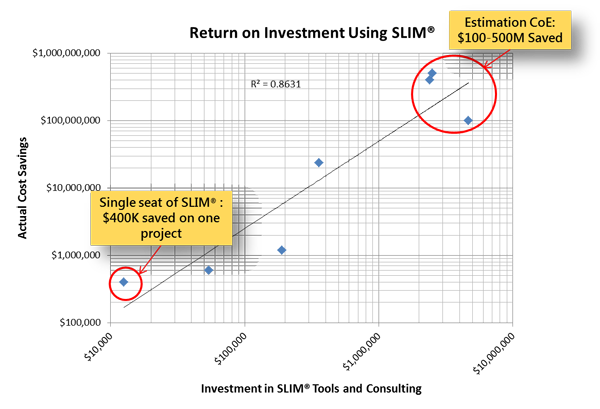How is baseball analysis like software project management? One way is the ability to continually update estimates and forecasts, as the situation and our knowledge change. As Larry Putnam Jr recently wrote, “project estimation should continue throughout the entire project lifecycle”.
Walter Shewhart, the father of Statistical Process Control, explained it like this:
“…since we can make operationally verifiable predictions only in terms of future observations, it follows that with the acquisition of new data, not only may the magnitudes involved in any prediction change, but also our grounds for belief in it.”
Here is a baseball example that should appear very familiar to software estimators who are familiar with the often quoted cone of uncertainty. The following graph is taken from Curve Ball: Baseball, Statistics, and the Role of Chance in the Game, by Jim Albert and Jay Bennett.

The above model is based upon only a few simple items: The number of homeruns hit so far; the number of games played so far and number remaining; and the total number of games in a season. We could try to improve the model, especially early in the season, by incorporating more information. For example:


 Software project benchmarking and estimating leverages the power of
Software project benchmarking and estimating leverages the power of 

 Since I work for a
Since I work for a 
 The laws of flight have many commonalities with the “physics” of software development. Whereas the principles of aerodynamics are essentially about thrust, drag, lift and weight, developing software has always been about the relationship between size (scope), effort (cost), duration (schedule) and the often overlooked
The laws of flight have many commonalities with the “physics” of software development. Whereas the principles of aerodynamics are essentially about thrust, drag, lift and weight, developing software has always been about the relationship between size (scope), effort (cost), duration (schedule) and the often overlooked